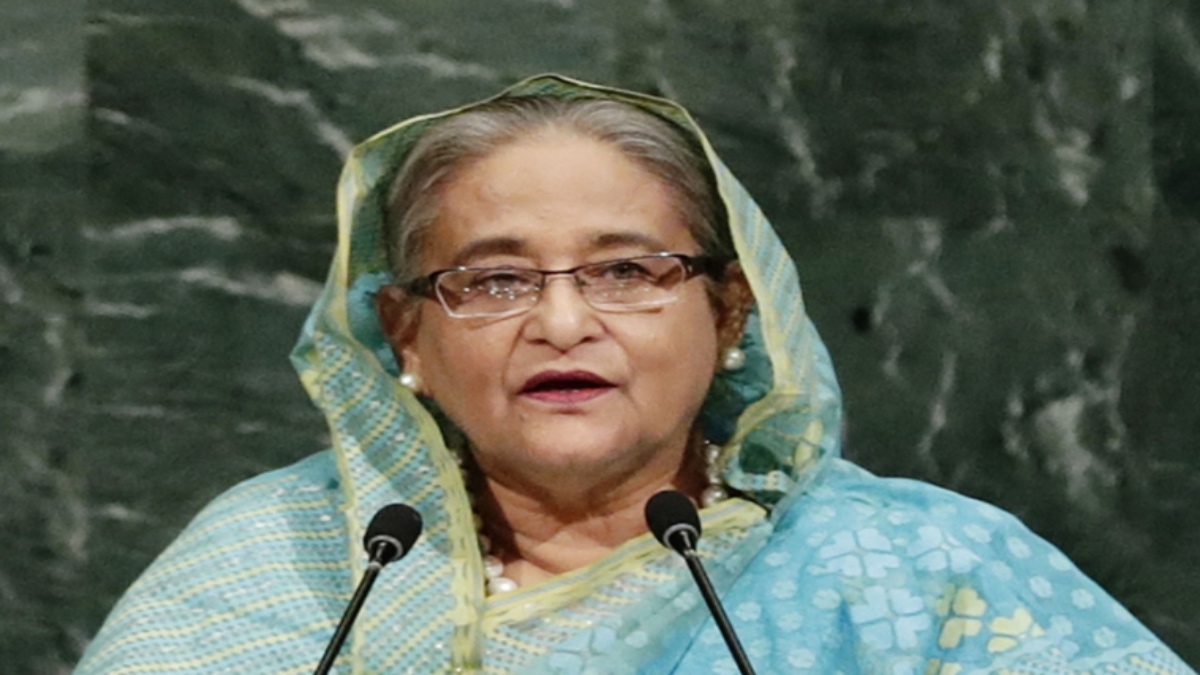


Towards the end of the Afghan war, Islamist terrorist group Harkat-ul Jihad (HuJI) was established for Bangladesh in the town of Khost on the Afghan-Pakistani border. The terrorists who joined the Afghan war from Bangladesh formed this organisation. The purpose was to send mujahideen to any country where there would be jihad or religious war. A branch of this organisation was opened in Bangladesh to fight for the Rohingya Muslims in Arakan, Myanmar, and to send fighters to Kashmir in India. At that time, most Bangladeshi youths who joined the Afghan war were students of Deoband madarsa in India, Karachi madarsa in Pakistan, and various madarsas in Bangladesh.
After the Soviet invasion of Afghanistan on 24 December 1979, Bangladeshi terrorists went to Afghanistan and remained there until the Soviet Union left in 1989. The three terror figures of Bangladesh—Mufti Hannan, Maulana Rauf and Maulana Farooqi—were once the bodyguards of Al Qaeda chief Osama bin Laden. They returned to Bangladesh after the Taliban took over Afghanistan. In Bangladesh, they are known as Afghan mujahideen.
HuJI was founded in 1989 by Maulana Abdur Rahman Farooqi of Monirampur in Jessore of Bangladesh. That same year, Maulana Farooqi was killed while clearing landmines in Khost, Afghanistan. Later after returning to Bangladesh on 30 April 1992, HuJI made a press conference at the National Press Club in Dhaka. Most Afghan returnees joined it. They were educated in Deoband madarsas of India and were believers of Hanafi doctrine of Islam. However, many top leaders of the organisation studied in different madarsas in Pakistan. During the Afghan war, they received training in guerrilla warfare and heavy weaponry. HuJI, an organisation formed by these leaders, is considered to be the originator of terrorism in the country.
Initially, these Afghan mujahideen were highly respected by the students of different madarsas in this country. And using that image, they started recruiting members from different madarsas in the country, urging them to stand by the “oppressed Muslims” of Arakan. They set up armed training centres in the hilly areas of Chittagong, Cox’s Bazar and Bandarban for the selected members. The period between 1992 and 1996 was the heyday of HuJI. During HuJI’s time, two armed Rohingya organisations, the RSO (Rohingya Solidarity Organisation) and the ARNO (Arakan Rohingya National Organisation), were organised and active in the border areas of Myanmar. The HuJI and Rohingya rebels were allies. Later, it was reported in the media that huge funds were received from various Middle East NGOs in the name of helping the Rohingya refugees. In 2003, 2004 and 2005, the BDR-RAB recovered large quantities of weapons from the jungles of Naikhyangchhari, believed to belong to Rohingya terrorist groups.
The group carried out the first sabotage bombing in Udichi, Jessore. Ten people were killed and more than a hundred injured in that attack on 7 March 1999. Eight people were killed in a bomb blast at the Ahmadiyya Mosque in Khulna on 8 October, seven months after the Udichi attack. On 20 July 2000, the names of Harkatul Jihad and its leader Mufti Hannan came to light when a 76-kg bomb was placed near Shaikh Hasina’s public meeting to kill her, but the then Awami League government failed to arrest Hannan. On 14 April 2001, during the Bengali New Year celebrations, a bomb was hurled at the base of Ramna; on 3 June at a church in Gopalganj’s Baniyarchar, and on 18 June at an Awami League office in Narayanganj.
During the BNP-Jamaat coalition government, HuJI carried out 13 bomb and grenade attacks in the country in seven years till the assassination of former finance minister Shah A.M.S. Kibria at a rally in Habiganj on 26 January 2005. A total of 109 people were killed. More than 600 people were injured.
HuJI’s biggest and most horrific attack was on the then Leader of the Opposition, Sheikh Hasina, on 21 August 2004 in Dhaka. The grenade attack killed 22 people. Hundreds of Awami League leaders and activists, including Sheikh Hasina, were injured. A similar grenade was used to attack the then British High Commissioner, Anwar Chowdhury, on 21 May 2004 in Sylhet. Later, it was revealed that the consignment of these grenades came from Pakistan.
Later, several terrorists, including Mufti Hannan, testified in the court that the grenades came from Pakistan. With the exception of Anwar Chowdhury, most of the attacks targeted Awami League leaders, including Sheikh Hasina. But the then BNP-Jamaat government could not properly investigate these incidents and reveal the truth.
In 2008, a new caretaker government came to power and took the initiative to re-investigate the case on 21 August. In 2008, the CID filed charges against 22 people, including Mufti Hannan, BNP deputy minister Abdus Salam Pintu and his brother Maulana Tajuddin. Later in 2009, the Awami League government came forward and after further investigation.
Although HuJI leaders claimed to be divided into three factions, according to a CID official involved in the August 21 grenade attack investigation, they were “all the same inside”. During the caretaker government, the mainstream claimants of HuJI were out of reach. HuJI was banned in October 2005, but it started operating under a different name.
In an editorial in Pakistan’s English-language Daily Times on 26 February 2005, it was reported that Islamic State (ISIS) terrorists were active in Karachi and Khost, Pakistan. Now they are believed to be inside Bangladesh too. If we look at the situation in Bangladesh, Pakistani influence will be observed. Shafqat Munir, a security analyst and research fellow at the Bangladesh Institute of Peace and Securities Studies, said in an interview that the Afghan returnees had formed armed groups not only in Bangladesh but also in the Philippines, Indonesia and Chechnya. And they pose a serious threat not only inside the country they operate into but also outside.